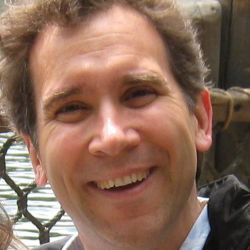
If you haven’t seen the Code.org videos, stop what you’re doing and check them out immediately. There are three different versions, in lengths of 1, 5, and 9 minutes. Here’s the five minute version.
I heard people at the ACM SIGCSE 2013 Symposium talking about the Code.org videos several times each day. Jane Margolis talked about the videos in her closing plenary, saying that it was generating an enormous amount of excitement. She talked about working for years to engender interest in CS classes in some school districts, then hearing from school district administrators who saw the video and were now interested. Jan Cuny of NSF predicts that this is an inflection point, and the movement towards more computer science in high schools picks up steam from here. That sense of momentum is probably helped by President Obama’s statements in February (seen on YouTube here) when he said that mandating computer programming in high school "makes sense" (described on TechCrunch.com).
Most of the readers of this blog, if they are in education, are in post-secondary education. The high school CS efforts are in our best interest, too. More students seeing computer science in high school means that more students come onto our campuses knowing what CS is and being better prepared to study it. I’m particularly interested in the story of Stuck in the Shallow End. Making CS available in all high schools increases dramatically the odds that women and under-represented minority students will try CS and decide to pursue computing degrees and careers.
What can faculty in colleges and universities do to support this effort? Activities for higher-education faculty to support high school computer science education are described at CSEdweek.org. These include holding open houses for high school students and their parents to introduce them to computer science, create "road shows" to go out to high schools, and offering courses for non-majors on your campus.
I have a couple of more direct recommendations:
- First, push a requirement for computer science for all undergraduates on your campus. That worked for calculus. Because the undergraduate institutions required it, high schools aspired to teach it.
- Second, even if you can’t push for a general education requirement at your institution, recommend that all undergraduate applicants take a computer science course in high school. That’s an easier sell on most campuses, because it doesn’t take elective credit hours from anybody’s program. At the same time, it makes the point that computer science is valued. If high schools see that the colleges and universities value computer science, they will have more motivation to offer computer science at their school.
Code.org is raising awareness of the need to teach more computer science in high school. The next step is to move that awareness into action and the creation of more high school CS classes.



Join the Discussion (0)
Become a Member or Sign In to Post a Comment